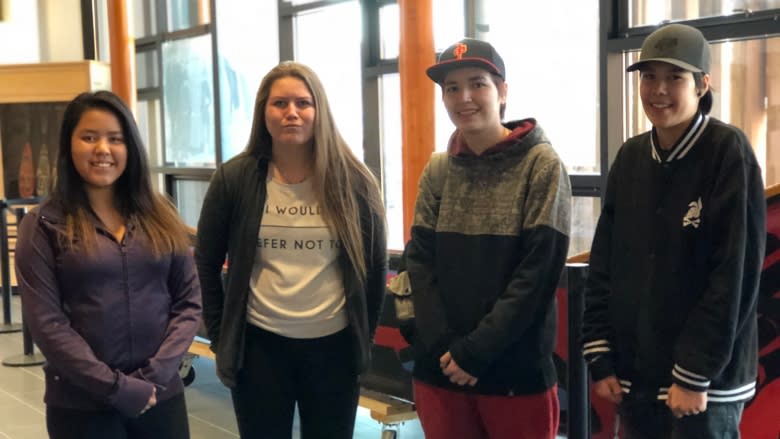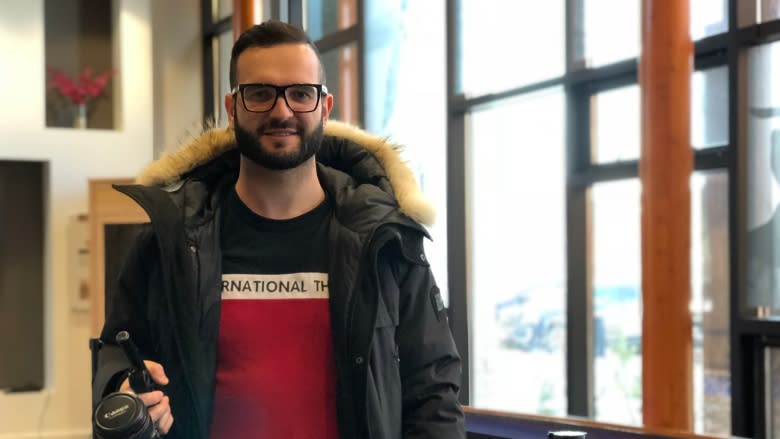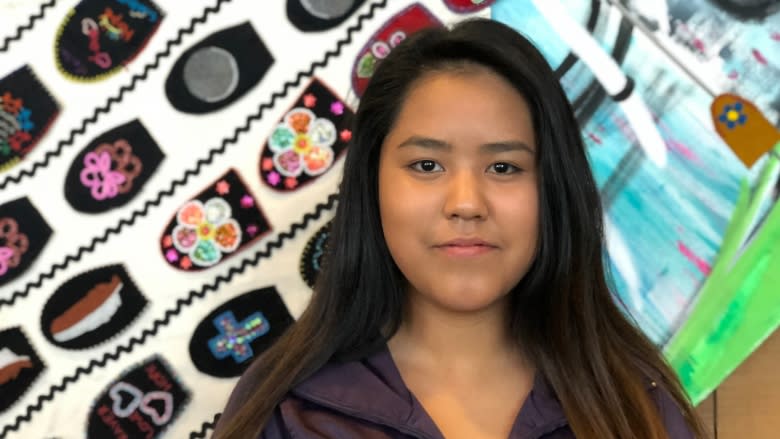Music videos give voice to Indigenous youth in Yukon
Some Indigenous youth in Yukon have been learning new ways to express themselves and tell their stories through music and video, thanks to an initiative called N'we Jinan.
It's a non-profit organization that brings a mobile recording studio to small, remote communities across Canada, and this month it visited three Yukon communities — Whitehorse, Watson Lake, and Pelly Crossing.
With their own personal stories as a foundation, local youth are writing songs and starring in professional-calibre music videos.
N'we Jinan was co-founded by David Hodges, a hip hop producer and youth worker from Montreal.
"It's all based off conversations with the youth — that is where we start," said Hodges. "These conversations eventually turn into a song concept and from there we do some creative writing, we start recording and then we shoot the music video."
Hodges says teaching youth the power of storytelling through music and art is a big part of what N'we Jinan is about.
"The root of the project comes from the kids and what they want to say," said Hodges. "Music is a universal language, it creates a safe space for young people."
Since its conception in 2014, N'we Jinan has travelled to 21 First Nation and Native American communities, has compiled over 60 original songs, produced 17 music videos, and worked with more than 300 young people.
Hodges says coming north gives youth in those communities the opportunity to be artistic through a platform that isn't always readily available to them.
"Our hope is that this is a stepping stone for them," said Hodges. "For personal confidence and as a seed for future programming.
"To see their transformation from when we first met them, in four days ... it's always a surprise ... the kids here are exceptionally gifted and have a lot of potential."
Videos proving popular
The videos shot in Yukon are finding an audience.
In just a few days, the video and song created with the Selkirk First Nation youth has been viewed more than 38,000 times on Facebook.
Hodges says the popularity of the video projects, shot in other communities, helps in getting young people to open up and really buy into the project.
"They see the results we've had in other communities, so they know we can get to that result," said Hodges.
In addition to the storytelling and work in front of the camera, youth are also taught the fundamentals of video-making.
"We chose locations that are significant for the kids and we shoot story lines for each kid ... whatever they talk about, my job is to put that to visuals," said videographer Andrei Savu.
"Every youth, every kid we work with, they have their own story and their own things to share. Some of those stories can be very emotional."
Immediate impact
Gina Gill is with the Selkirk First Nation, specializing in language and culture.
She says the impact of the project on the youth was immediate.
"They're glowing and quite proud, but they wouldn't say that," said Gill. "It gives them confidence and self-esteem for anything in the future."
Sixteen-year-old Tamika Charlie, who participated in the Whitehorse project, says stepping out of her comfort zone to try something new has been very cool.
"Recording yourself and getting to hear how you actually sound, I'm really enjoying it," said Charlie. "It's been good pushing myself up to another level."
Teya Kocsis of Whitehorse, also 16, hopes she can take the skills she has learned through N'we Jinan and teach them to other youth.
"To learn how to do all of this on your own, it would be cool to travel all around and help kids out like this ... that would be really cool."





